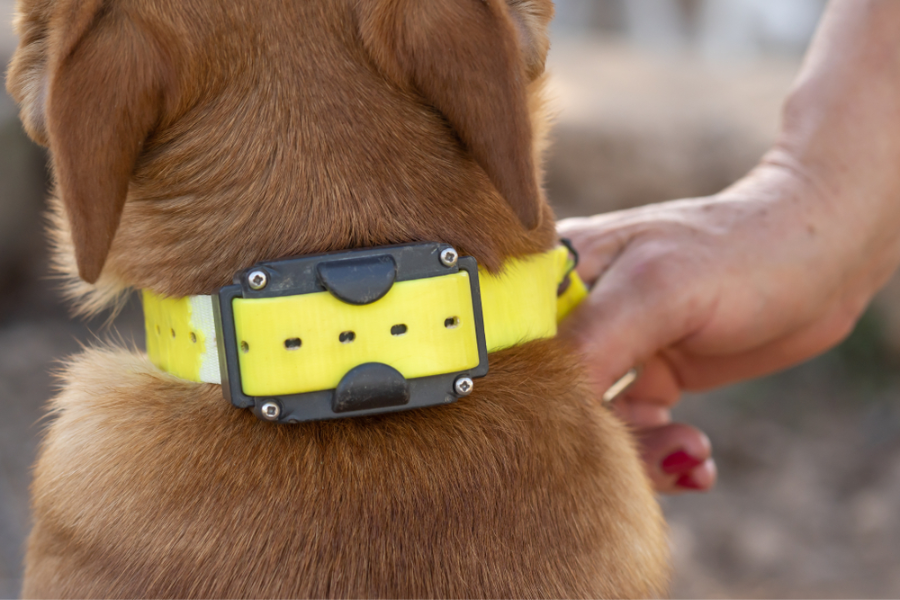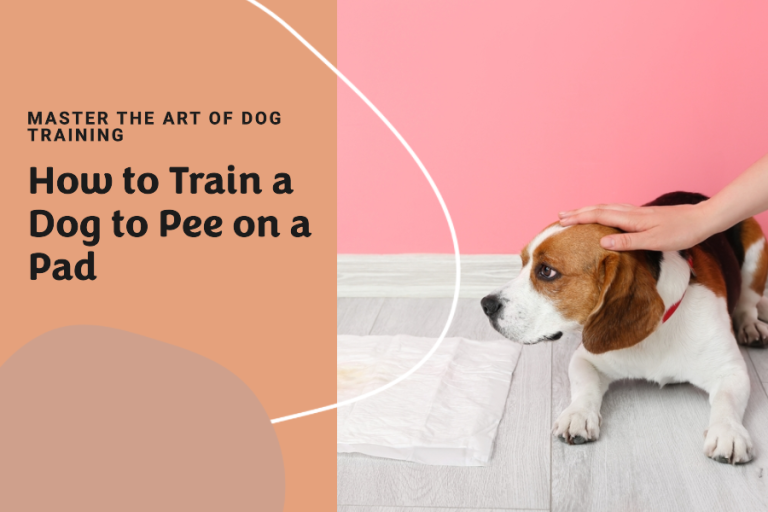Do Shock Collars Work For Barking ?- An Effective Solution For Excessive Barking
Barking is a natural behavior for dogs, but when it becomes excessive, this continuous barking can cause stress, disturb peace, and even strain relationships with neighbors. In search of solutions, Do Shock Collars Work For Barking is emerging as a topic shrouded in controversy, opinions, and a mix of anecdotal and scientific evidence.
We’re here to share all about these handy tools. Will a shock collar be the magic solution to your dog’s incessant barking? We aim to examine the effectiveness and safety of shock collars and find expert opinions, real-life stories, and practical advice. We’ll also chat about whether they really help control barking. We promise to keep things simple and easy to understand, so you can make the best choices for your furry friend.

Do Shock Collars Work for Barking?
Shock collars, or e-collars, are common tools in dog training. But are they good at stopping barking? Let’s find out.
A shock collar is a device that gives your dog a small electric shock. It’s used to stop behaviors you don’t like, like barking too much. There are a lot of different shock collars out there. Some give a shock based on what your dog does. Others let you give a shock when you think it’s needed.
There is evidence suggesting that shock collars can be effective in reducing or eliminating unwanted barking. The principle behind their use is simple: by providing an immediate and unpleasant stimulus whenever the dog barks, the dog learns to associate barking with discomfort and thus is discouraged from continuing the behavior.
Many studies say yes, shock collars can help stop barking. One study even said that shock collars helped 63% of dogs bark less. But remember, every dog is different. What works for one might not work for another.
Some people say shock collars work great for their dogs. Others say they didn’t help at all. Some say they even made things worse. The thing to remember is that a lot depends on your dog, why they’re barking, and how you use the collar.
Should We Use Shock Collars for Barking Dogs?
As pet lovers, we always want the best for our furry friends. We want to stop them from barking too much, but without causing any harm. Some of us use shock collars, but are they the right choice?

Step-by-step Use of Shock Collars for Barking Dogs
Training a dog to reduce or stop its excessive barking using a bark collar involves a few important steps. It requires patience, consistency, and a good understanding of your dog’s behavior. Here’s a step-by-step guide on how to effectively use a bark collar for training purposes.
- Understand the Collar: Familiarize yourself with the different settings and functions of the shock collar. It’s crucial to know how to adjust the intensity of the shock to the lowest effective level.
- Proper Fitting: The collar should fit snugly around your dog’s neck without causing discomfort. It should not be too tight to cause chafing or too loose to slip off.
- Start with the Lowest Setting: Begin with the lowest shock setting. The goal is to get your dog’s attention, not to cause pain or fear.
- Positive Reinforcement: Pair the use of the shock collar with positive reinforcement. Reward your dog for obeying commands and displaying desired behaviors.
- Training and Conditioning: Use the shock collar as part of a broader training program. Teach your dog commands like “quiet” or “stop” and use the collar as a reinforcement tool, not the sole training method.
- Monitor Your Dog’s Reaction: Observe your dog’s response to the collar. Signs of distress or anxiety indicate that the collar may not be the right tool for your dog.
Importance To Notice When Using Shock Collar For Barking Dogs
I would like to offer some guidance on using a shock collar for address barking in dogs.
It’s important to understand that excessive barking often stems from underlying issues such as anxiety, boredom, or fear, and addressing these root causes is essential for effective behavior change.
When considering a shock collar, it’s crucial to ensure that it fits properly. The collar should be snug enough to make contact without causing discomfort. Start with the lowest level of stimulation and only increase it if absolutely necessary. The aim is to capture your dog’s attention, not to inflict pain or fear. Correct timing of correction is also key; it must be immediate to help your dog make the correct association between barking and stimulation.
Remember to keep training sessions short and focused to avoid stress and frustration. It’s vital to monitor your dog’s reaction to the collar and adjust your approach accordingly, especially looking for signs of stress or anxiety.
I strongly recommend reducing reliance on the shock collar over time. The ultimate goal should be to phase out its use as your dog learns to respond to verbal commands and other training cues.

Beyond Shock Collars: Humane Dog Training Techniques
Because shock collars are so controversial, some groups and dog trainers suggest other ways to train dogs. They recommend positive reinforcement, which means giving the dog a reward for good behavior instead of a zap for bad behavior.
Positive reinforcement can be a “good boy” or a treat, or anything else the dog likes. This involves rewarding desired behaviors with treats, praise, or play. This is a very efficient form of teaching since dogs are more willing to repeat behaviors for which they are rewarded.
Socializing them to different people, animals, and environments has made a world of difference. Pets become much more adaptable and less prone to anxiety or aggression in new situations.
Regular exercise has been crucial for dog’s well-being and behavior. Long walks, runs, and games like fetch keep them physically active, while puzzle toys challenge their mind. This combination has helped reduce any destructive behaviors born from boredom or pent-up energy.
To sum it up, shock collars might help stop barking, but they can also scare and stress out our dogs. As dog lovers, we should try to train our dogs in a way that’s not only effective but also kind and respectful.
Tips from Professional Trainers
Professional trainers advise that bark-collar training should not be a standalone solution. It should be part of a comprehensive training plan that includes positive reinforcement. Also, avoid leaving the bark collar on your dog for prolonged periods of time. It’s recommended to limit the use to a maximum of 12 hours per day.
A common mistake is to rush the process. Remember, effective training takes time. Avoid increasing the level of stimulation too quickly. The goal is to get your dog’s attention, not cause fear or pain.
Duration of Training with a Bark Collar
The duration of bark collar training varies based on the dog’s breed, age, and temperament. Some dogs may show improvement within a week, while others may take a few weeks. Consistency is key in this process.
| Dog’s Age Group | Duration of Training with Bark Collar | Training Lessons During Bark Collar Use |
| Puppy (2-6 months) | 1-2 weeks | Basic obedience, socialization, short and positive training sessions |
| Young Dog (6-18 months) | 2-4 weeks | Continued obedience training, introduction to more complex commands, consistent routines |
| Adult Dog (18 months-6 years) | 3-6 weeks | Reinforcement of learned behaviors, complex commands, and addressing any behavioral issues |
| Senior Dog (7+ years) | Varies (be cautious) | Gentle reinforcement of existing training, considering health and sensory limitations |
In conclusion, while bark collars can be an effective training tool to control excessive barking, they should be used responsibly and as part of a comprehensive training program. Always ensure that the wellbeing and happiness of your pet are your top priorities.
Why won’t my dog stop barking with a shock collar?
At times, you may find that your dog continues to bark incessantly, even with a shock collar. This situation can be quite perplexing and frustrating for us as pet owners. There are a few reasons why your dog might not respond to shock collar training.
Firstly, the shock collar might not be fitted correctly. If the collar is too loose, your dog might not feel the shock intended to deter them from barking.
Another possible reason is that your dog might have become desensitized to the shock. This happens when the dog gets used to the shock and it no longer serves as a deterrent.
Lastly, your dog might be barking due to other reasons such as anxiety, fear, or even a medical issue. In these cases, a shock collar can exacerbate the issue rather than solving it.

Do Shock Collars React to Other Dogs Barking?
Yes, they can, but it’s not the norm. Top-notch bark collars can tell the difference between your dog’s bark and other noises. But, some might get mixed up if they’re not set up right.
Shock Collars and Noise
Shock collars zap a little when your dog barks. They should only react to your dog’s bark. But, if they’re too sensitive, they might get tricked by other loud noises or even other dogs barking.
Don’t worry though! Most new shock collars let you change how sensitive they are. This means you can set it to only react to your dog’s barking. Make sure you read the instructions and set it up right to keep your dog from getting zapped for no reason.
Stop False Zaps
No one wants their dog getting zapped for no reason. It’s not fair, and it can scare your dog. Here are some easy steps to stop that from happening:
- Change the sensitivity: As we said before, you can usually change how sensitive the collar is. It might take a little bit of playing around with it, but it’ll be worth it.
- Put the collar on right: Make sure the collar fits your dog well. It should be close to their neck but not too tight.
- Check the collar: Make sure to look over the collar often to see if it’s working right. Clean it and change the batteries when you need to.
So, while some shock collars might zap when other dogs bark, you can stop this from happening. By understanding how to set up and look after the collar, you can help your dog stop barking too much without any extra zaps.

Comprehensive User Reviews of Top Bark Collars
In this review, I’ll cover various aspects of shock collars, suggest some models, and share both personal experiences and user reviews.
SportDOG Brand NoBark Rechargeable Collar
Known for its reliability and long battery life. It has multiple modes and intensity levels, allowing for customization to your dog’s needs.
Features:
- Rechargeable battery with a long life.
- Multiple modes and levels of stimulation, allowing for customization.
- Waterproof design, suitable for all weather conditions.
Effectiveness:
It is generally highly effective, with many users reporting significant reductions in their dogs’ barking behavior.
The range of intensity levels means it can be adjusted for different dog sizes and temperaments.
PetSafe Elite Bark Control Collar
This model is popular for its durability and the incorporation of both sound and vibration sensors. It’s also waterproof, making it suitable for outdoor use.
Features:
- It combines sound and vibration sensors to reduce false corrections.
- It is waterproof, making it great for outdoor use.
- Known for being lightweight and comfortable for the dog.
Effectiveness:
The dual-sensor technology is often praised for its accuracy in detecting barking.
Effective in reducing barking in many cases, as reported by users.

Garmin BarkLimiter Deluxe
Offers both vibration and shock corrections and is known for its robustness and accuracy in detection.
Features:
- Offers both vibration and shock corrections.
- Robust design, known for its durability.
- Advanced bark detection technology minimizes false corrections.
Effectiveness:
Highly effective in reducing barking with accurate bark detection technology.
The ability to switch between vibration and shock provides versatility for different training needs.
Conclusion
So, we’ve taken a deep dive into bark and shock collars. We’ve explored where they come from, how they work, and if they help stop barking. Shock collars can help, but they don’t work for every dog. It’s vital to know what your dog needs.
There’s a big debate about whether these collars are fair to our furry friends. How you use a training tool can make a big difference. That’s why we shared tips on using a bark collar. Avoid mistakes and listen to the experts. Don’t forget, there are other ways to train your dog too.
We believe in loving and respecting our pets. Understand what your dog needs, give them love, and always treat them right. That’s what makes being a pet owner so special.









